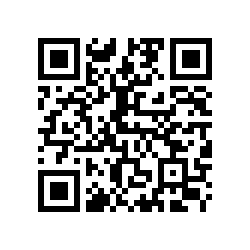Perancangan Aplikasi Rekomendasi Shade Complexion Make Up Untuk Menentukan Jenis Foundation Menggunakan Model Rational Unified Process (RUP) Berbasis Web
(1) STMIK Jakarta STI&K, Jakarta Selatan, Indonesia
(2) STMIK Jakarta STI&K, Jakarta Selatan, Indonesia
(*) Corresponding Author
Abstract
Full Text:
PDFReferences
Y. I. Ligariaty and I. Irwansyah, “Narasi Persuasi Social Media Influencer Dalam Membangun Konsep Kecantikan Dan Kepercayaan Diri,” J. Pustaka Komun., vol. 4, no. 2, Art. no. 2, Sep. 2021, doi: 10.32509/pustakom.v4i2.1495.
A. B. Hapsari and P. S. Sukardani, “Representasi Konsep Kecantikan Perempuan di Era Millennials Melalui Beauty Influencer Pada Media Sosial Instagram,” The Commercium, vol. 1, no. 2, 2018, Accessed: Jul. 08, 2024. [Online]. Available: https://ejournal.unesa.ac.id
N. Cindylaras, “Perancangan Interior Klinik Kecantikan Erha Derma Center Dengan Konsep Modern Kontemporer Di Tangerang,” s1, Universitas Mercu Buana Jakarta, 2021. Accessed: Jul. 08, 2024. [Online]. Available: https://repository.mercubuana.ac.id/78283/
D. N. Wiraguna, “Konsep kecantikan mature adult dalam konten digital marketing Instagram klinik kecantikan Dermaster Jakarta,” bachelor, Universitas Pelita Harapan, 2024. doi: 10/Appendices.pdf.
D. Atikah and H. Riofita, “Menembus Pasar Dengan Kreativitas: Panduan Kewirausahaan Dalam Industri Kosmetik,” J. Multidisiplin Inov., vol. 8, no. 5, Art. no. 5, May 2024, Accessed: Jul. 08, 2024. [Online]. Available: https://sejurnal.com/1/index.php/jmi/article/view/1370
R. D. Santy and P. M. Wulandari, “Membangun Loyalitas Pelanggan dalam Industri Kosmetik: Peran Kesesuaian Diri, Citra Merek, dan Keterikatan Emosional,” J. Econ. Manag. Bus. Account. JEMBA, vol. 4, no. 1, Art. no. 1, Jun. 2024, doi: 10.34010/jemba.v4i1.13089.
153040013 Sri Devy Permatasari, D. S. Caca Emile Supriana, and D. S. Shanti Herliani, “Perancangan Sistem Pakar Diagnosa Jenis Kulit Wajah Wanita Dalam Memilih Kosmetik,” other, Fakultas Teknik Unpas, 2020. Accessed: Jul. 08, 2024. [Online]. Available: https://repository.unpas.ac.id/47493/http:/www.teknik.unpas.ac.id
M. Sudarma, S. Ariyani, and P. A. Wicaksana, “Implementation of the Rational Unified Process (RUP) Model in Design Planning of Sales Order Management System,” INTENSIF J. Ilm. Penelit. Dan Penerapan Teknol. Sist. Inf., vol. 5, no. 2, Art. no. 2, Aug. 2021, doi: 10.29407/intensif.v5i2.15543.
T. K. Tia, I. Nuryasin, and M. Maskur, “Model Simulasi Rational Unified Process (RUP) Pada Pegembagan Perangkat Lunak,” J. Repos., vol. 2, no. 4, Art. no. 4, 2020, doi: 10.22219/repositor.v2i4.30511.
Y. I. Chandra, D. R. Irawati, and K. Rokoyah, “Rancang Bangun Aplikasi Pola Asuh Orang Tua Terhadap Anak Menggunakan Model Big Bang Berbasis Android,” Ikraith-Inform., vol. 6, no. 3, Art. no. 3, Nov. 2022, doi: 10.37817/ikraith-informatika.v6i3.2203.
F. Sonata, “Pemanfaatan UML (Unified Modeling Language) Dalam Perancangan Sistem Informasi E-Commerce Jenis Customer-To-Customer,” J. Komunika J. Komun. Media Dan Inform., vol. 8, no. 1, Art. no. 1, Jun. 2019, doi: 10.31504/komunika.v8i1.1832.
L. V. Manzoni and R. T. Price, “Identifying extensions required by RUP (rational unified process) to comply with CMM (capability maturity model) levels 2 and 3,” IEEE Trans. Softw. Eng., vol. 29, no. 2, pp. 181–192, Feb. 2003, doi: 10.1109/TSE.2003.1178058.
P. Kruchten, “Tutorial: introduction to the rational unified process®,” in Proceedings of the 24th International Conference on Software Engineering, in ICSE ’02. New York, NY, USA: Association for Computing Machinery, Mei 2002, p. 703. doi: 10.1145/581339.581455.
DOI: https://doi.org/10.30645/kesatria.v5i3.454
DOI (PDF): https://doi.org/10.30645/kesatria.v5i3.454.g449
Refbacks
- There are currently no refbacks.
Published Papers Indexed/Abstracted By:














